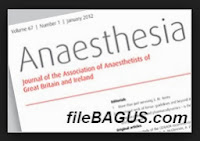How to Survive in Anaesthesia - A Guide to Trainee.pdf
Part I
Nuts and bolts
The first section of this book deals with two fundamental aspects of
anaesthetic practice: the airway and vascular access. General
anaesthesia has been summarised by the simple phrase put up a drip,
put down a tube and give plenty of oxygen. Many anaesthetists resent this
glib description of their work, but it does have the virtue of
emphasising the importance of venous cannulation and control of
the airway, which are essential for the safe conduct of anaesthesia.
Difficulties arise in anaesthesia when one of these fundamental areas
is not secure and, if both fail, then disaster is close at hand.
Therefore, in the first 10 chapters we concentrate on evaluation
and control of the airway, the anaesthetic machine and circuits,
basic anaesthetic monitoring, vascular access, and the choice of
intravenous fluids. We have not given detailed instructions on how to
undertake the practical procedures. There is no substitute for careful
instruction from a senior anaesthetist as part of the anaesthetic
procedure. At the start of training the application of physiology and
pharmacology to anaesthesia is exciting, and knowledge of the
equipment may seem mundane and even boring. It is imperative that
you have a basic understanding of the equipment you use – failure to
do so will put the patient at risk.
1: Evaluation of the airway
Control of the airway is fundamental for safe anaesthetic practice and
careful assessment must be undertaken pre-operatively. This is carried
out logically as summarised in Box 1.1.
History
Any previous anaesthetic history must be obtained. Information
about difficulties with endotracheal intubation may be found in old
anaesthetic records. Previous successful intubation is not an indicator
of its ease. Some patients carry letters or wear Medic-alert bracelets
stating their anaesthetic difficulties, whilst others with major
problems know nothing about them.
Symptoms
Upper airway obstruction may be found in patients with stridor,
dysphagia, and hoarseness.
Examination and clinical tests
Normal anatomy and its variants
Some patients appear anatomically normal and yet are difficult, ...
DOWNLOAD
Nuts and bolts
The first section of this book deals with two fundamental aspects of
anaesthetic practice: the airway and vascular access. General
anaesthesia has been summarised by the simple phrase put up a drip,
put down a tube and give plenty of oxygen. Many anaesthetists resent this
glib description of their work, but it does have the virtue of
emphasising the importance of venous cannulation and control of
the airway, which are essential for the safe conduct of anaesthesia.
Difficulties arise in anaesthesia when one of these fundamental areas
is not secure and, if both fail, then disaster is close at hand.
Therefore, in the first 10 chapters we concentrate on evaluation
and control of the airway, the anaesthetic machine and circuits,
basic anaesthetic monitoring, vascular access, and the choice of
intravenous fluids. We have not given detailed instructions on how to
undertake the practical procedures. There is no substitute for careful
instruction from a senior anaesthetist as part of the anaesthetic
procedure. At the start of training the application of physiology and
pharmacology to anaesthesia is exciting, and knowledge of the
equipment may seem mundane and even boring. It is imperative that
you have a basic understanding of the equipment you use – failure to
do so will put the patient at risk.
1: Evaluation of the airway
Control of the airway is fundamental for safe anaesthetic practice and
careful assessment must be undertaken pre-operatively. This is carried
out logically as summarised in Box 1.1.
History
Any previous anaesthetic history must be obtained. Information
about difficulties with endotracheal intubation may be found in old
anaesthetic records. Previous successful intubation is not an indicator
of its ease. Some patients carry letters or wear Medic-alert bracelets
stating their anaesthetic difficulties, whilst others with major
problems know nothing about them.
Symptoms
Upper airway obstruction may be found in patients with stridor,
dysphagia, and hoarseness.
Examination and clinical tests
Normal anatomy and its variants
Some patients appear anatomically normal and yet are difficult, ...
DOWNLOAD



Comments
Post a Comment